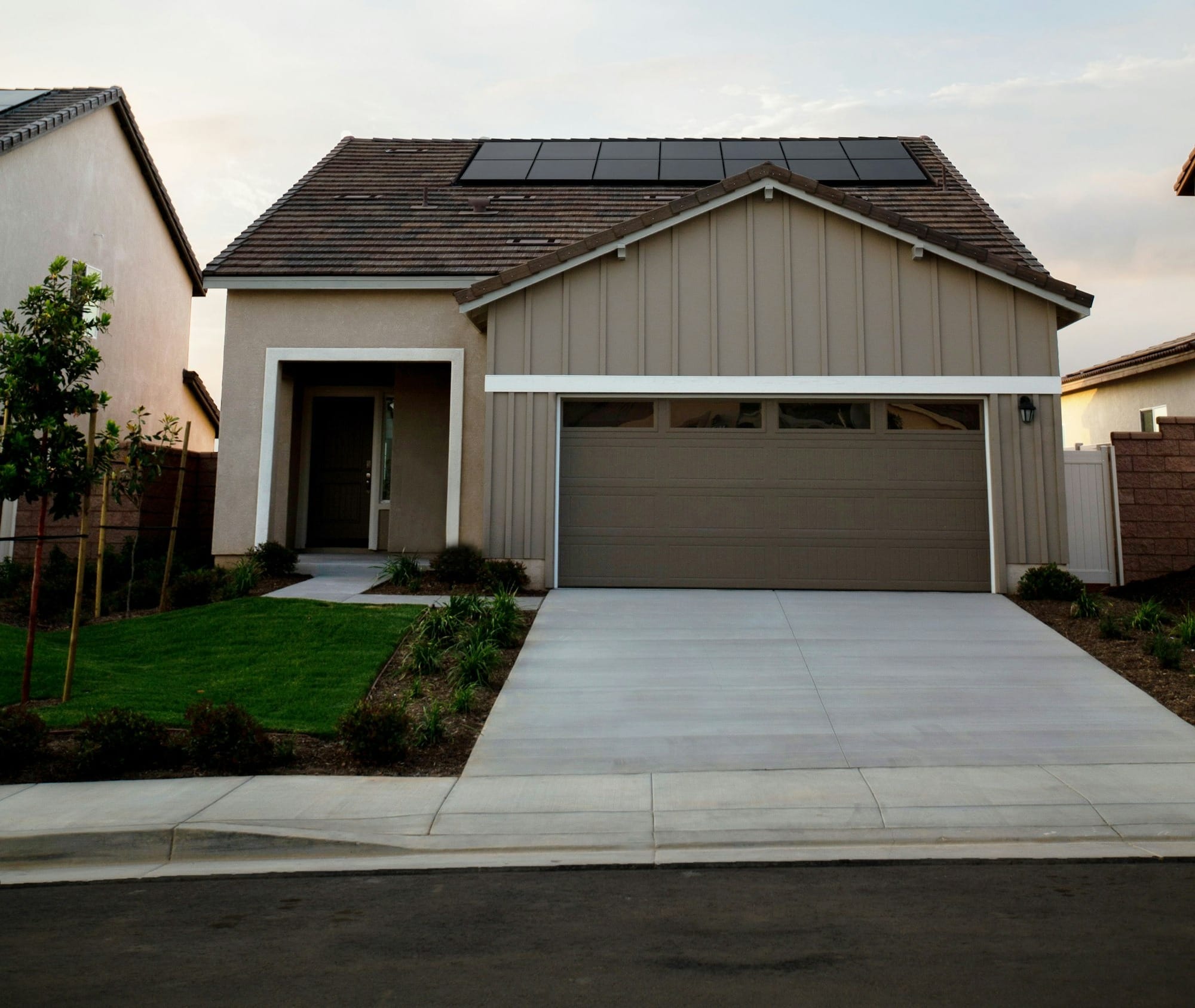Checklist for Maximizing Solar Panel Efficiency
Learn essential tips to enhance your solar panel efficiency, from cleaning techniques to professional maintenance and seasonal adjustments.

Want to keep your solar panels running at their best? Here’s how you can maximize energy output, save money, and extend their lifespan:
- Clean regularly: Use mild soap, distilled water, and a soft brush to remove dirt and debris. Clean during cooler times like early morning or overcast days.
- Inspect for damage: Check monthly for cracks, rust, loose wires, or weather seal wear. Address issues early to prevent bigger problems.
- Track power output: Monitor daily energy production and compare trends. A drop of more than 20% may signal an issue.
- Manage shading: Trim trees, adjust for seasonal sun angles, and remove objects causing shadows.
- Protect from animals: Install critter guards, wire mesh, and panel skirts to prevent damage from birds or squirrels.
- Schedule annual check-ups: Certified technicians can detect hidden issues, test performance, and recommend upgrades.
- Prepare for weather: Adjust panel angles seasonally, clear snow gently, and inspect after storms.
TOP 5 ways to increase efficiency of your Solar Panels
Basic Maintenance Steps
Regular maintenance helps keep solar panels running efficiently and can extend their lifespan. Here's a breakdown of the key steps to keep your system in top shape.
Panel Cleaning Methods
Keeping your panels clean ensures they absorb as much sunlight as possible. Use a soft brush or squeegee on an extension pole, along with mild soap and distilled water.
Here’s how to clean them:
- Rinse the panels with water to wash away loose debris.
- Gently scrub the surface with the soap solution.
- Rinse thoroughly with clean water.
- Inspect for any remaining dirt or streaks.
Damage Checks
Perform a visual inspection every month to spot potential issues early. Look for:
- Physical damage: Cracks, chips, or discoloration on the glass.
- Frame problems: Rust or loose mounting hardware.
- Seal wear: Weather seals around the panel edges that are cracked or deteriorating.
- Wiring issues: Exposed cables or loose connections.
If you notice anything concerning, take photos and contact your installer for repairs.
Best Times to Clean
Timing matters when cleaning your panels:
- Clean in the early morning or on overcast days to avoid heat-related risks.
- Avoid cleaning during peak sunlight hours (10 AM to 2 PM) or bad weather.
- Plan deep cleanings in early spring and late fall for optimal results.
If accessing your roof is risky, consider hiring a professional to handle the job safely.
Output Tracking
Keeping an eye on your solar system's performance can help you catch drops in efficiency and address issues before they escalate. Here's how to stay on top of your solar panel output.
Power Output Checks
Use your solar monitoring app or web portal to track your system's power generation. Focus on these key metrics:
- Daily Production: Check how many kilowatt-hours (kWh) your system produces each day.
- Peak Performance Hours: Pay attention to output between 10 AM and 2 PM, when production should be highest.
- Monthly Trends: Compare your system's performance across different seasons and weather conditions.
Set a baseline for your system's output. For example, a 6kW residential system in sunny conditions typically produces 20-25 kWh per day during summer. If your daily output drops by more than 20% under similar conditions, it’s time to investigate.
Inverter Status Checks
The inverter is the core of your solar system, converting the energy your panels generate into usable electricity. Check these indicators daily:
- LED Status Lights: A green light means everything is running smoothly.
- Error Codes: Take note of any warning messages.
- Display Readings: Compare actual output to your expected numbers.
- Operating Temperature: The inverter should stay between 140°F and 175°F (60°C to 80°C).
If you see a solid red light or error codes, record the issue and contact your installer right away.
Record Keeping
Keeping detailed records helps you spot trends and schedule maintenance. Use a simple system to track the following:
| Tracking Element | What to Record | Frequency |
|---|---|---|
| Power Output | Daily kWh production | Daily |
| Weather Conditions | Sunny, cloudy, or rainy | Daily |
| Cleaning Sessions | Date and cleaning method used | Each occurrence |
| Maintenance Work | Type of service performed | As needed |
| System Alerts | Error codes and resolutions | As they occur |
Store your data in a digital spreadsheet or a solar monitoring app. Review it every few months to identify any patterns that might indicate a drop in performance or the need for maintenance.
Problem Prevention
Taking proactive steps can help avoid efficiency issues. Start by managing shading problems to ensure your panels get the sunlight they need.
Shade Management
Shade can significantly reduce solar panel output. Even partial shading can cause a noticeable drop in efficiency. Keep an eye on these common shade sources and address them:
- Trees and Vegetation: Trim branches that cast shadows on your panels, especially during peak sunlight hours (10 AM – 2 PM). Make sure the area above the panels stays clear.
- Nearby Structures: Check for shadows caused by chimneys, satellite dishes, or neighboring buildings throughout the day. Move any removable objects if they’re creating unwanted shade patterns.
- Seasonal Changes: Pay attention to how sun angles shift with the seasons. Areas that are clear in summer might be shaded in winter.
Create a seasonal shade map to identify problem areas and adjust as needed.
Animal Protection
Wildlife can damage solar systems, so it’s important to protect your setup. Here are some methods to keep animals at bay:
| Protection Method | Purpose | Maintenance Frequency |
|---|---|---|
| Critter Guard | Keeps birds and squirrels from nesting | Check quarterly |
| Wire Mesh | Shields exposed cables | Check monthly |
| Panel Skirts | Blocks access to areas under panels | Check every 2 years |
| Sealant | Prevents pests and moisture entry | Check twice a year |
Focus on sealing entry points during spring and fall, as animals are more likely to seek shelter during these times. Regular checks of your system’s internal components also help maintain performance.
Hardware Checks
Routine hardware inspections can catch issues like loose connections or mounting problems before they affect efficiency:
- Mount Security: Inspect panel clamps and mounting rails every three months. Ensure they’re tight and look for signs of movement or stress at attachment points.
- Wire Connections: Examine accessible wiring for:
- Corrosion or discoloration
- Water damage
- Loose MC4 connectors
- Damaged insulation
Always shut off the system before performing hardware checks. If you find exposed wires or loose connections, contact a certified solar technician right away.
In areas with strong winds or large temperature swings, check mounting hardware more often. Pay extra attention to edge panels, which are more exposed to wind stress.
For rooftop systems, inspect roof flashing and penetrations during dry weather to ensure water-tight seals. Look for water stains underneath panel mounts, as these could signal a potential leak.
Weather Preparation
After routine cleaning and inspections, adjusting for seasonal changes helps keep your solar panels running efficiently. Aligning your panels with seasonal weather patterns ensures they stay productive throughout the year.
Adjusting Panel Angles
The angle of your solar panels plays a big role in how much sunlight they receive. If your mounting system allows, adjust the tilt of your panels each season to align with the sun's path. For fixed systems, set the angle based on your location's latitude for a balanced performance year-round. Always check your installation manual before making any changes. For winter, take extra steps to protect your panels from harsh conditions.
Winter Maintenance Tips
Follow these steps to care for your panels during winter:
-
Snow Removal
Use a soft-bristled rake with a long handle to gently clear snow. Avoid using hard or sharp tools that could damage the panels. -
Managing Ice
Skip salt or chemical de-icers, as they can harm the panels. Let ice melt naturally or use warm water if needed. Regularly check the mounts for any signs of damage.
Keep access paths around your panels clear. For roof-mounted setups, consider installing snow guards to prevent heavy snow buildup.
Expert Services
Regular maintenance keeps your solar panels running smoothly, but professional check-ups take performance to the next level. Certified technicians use advanced tools to spot and fix problems before they escalate, ensuring your system lasts longer.
Yearly Check-ups
Plan annual inspections in early spring to get your system ready for peak production. During these check-ups, technicians handle tasks like:
- Electrical Testing: Measure voltage and current to ensure proper operation.
- Infrared Scanning: Identify hidden hot spots or damaged cells.
- Connection Inspection: Examine wiring, connectors, and grounding for issues.
- Mount Stability: Check that mounting hardware is secure and stable.
- Performance Analysis: Review production data to spot any efficiency drops.
Inspections are best scheduled during clear weather for safe component access. For most residential systems, the process takes about 2-3 hours.
After these inspections, consider upgrading to newer technology to further improve your system's output.
New Technology Options
Modern upgrades can enhance your system's efficiency and functionality. Here are a few options:
Advanced Inverters
- Microinverters for optimizing each panel individually.
- Smart inverters with remote monitoring features.
- Power optimizers to improve performance in shaded conditions.
Energy Storage Systems
- Batteries for storing power to use at night.
- Backup power solutions for outages.
- Smart energy management systems to optimize usage.
Choose upgrades that offer clear benefits and pair them with modern monitoring tools to keep an eye on performance between inspections.
Summary
To keep solar panels running efficiently, regular care and monitoring are essential. Here's a streamlined checklist based on the guide's key recommendations.
Routine Maintenance
- Clean the panels on a regular schedule.
- Check for any visible damage or wear.
- Track power output and watch for seasonal shading changes.
- Add protective barriers to keep birds and small animals away.
Professional Assistance
- Arrange annual inspections with certified technicians.
- Upgrade to smart monitoring systems for better tracking.
- Maintain thorough records to meet warranty requirements.
- Address any sudden drops in efficiency promptly.
Weather-Related Adjustments
- Adjust the panel angles seasonally (e.g., 45° in winter, 30° in summer).
- Remove snow within 24 hours of accumulation.
- Inspect the system before and after severe weather.
- Keep drainage systems clear to avoid water damage.
Consistent care and timely professional help are crucial for maintaining the performance and longevity of your solar panels. By integrating these steps into your home maintenance routine, you can ensure your solar system performs at its best and delivers maximum energy output. For any concerns, reach out to certified solar technicians.

